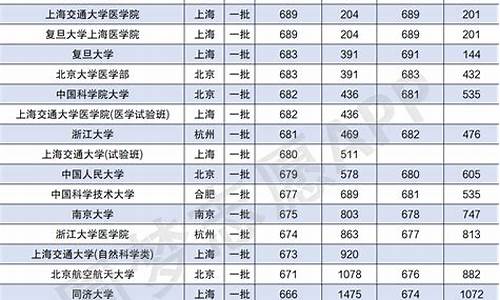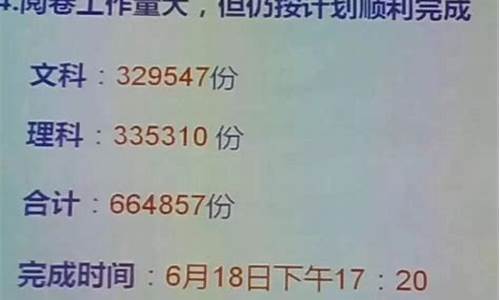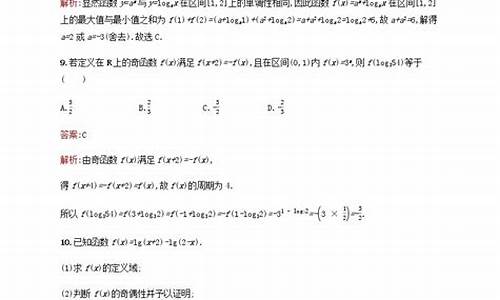您现在的位置是: 首页 > 教育政策 教育政策
高考状语从句专项训练_高考时间状语从句
tamoadmin 2024-05-28 人已围观
简介1.before的用法 before和after区别2.英语it强调句型怎么用?3.英语时态4.请给讲一下 as .....as ......的用法5.一道英语高考选择题6.广东10年高考英语第40题7.高中英语:高考英语常考60个句型+例句解答19.________all of them are strong candidates, only one will be chosen for the
1.before的用法 before和after区别
2.英语it强调句型怎么用?
3.英语时态
4.请给讲一下 as .....as ......的用法
5.一道英语高考选择题
6.广东10年高考英语第40题
7.高中英语:高考英语常考60个句型+例句

解答
19.________all of them are strong candidates, only one will be chosen for the post.
A. Since B.While C. If D. As
分析这道题考察逻辑关系。A since 既然;B while 虽然,表弱转折;C if 如果;D as 因为
逻辑关系是 转折。
答案B
翻译虽然所有的候选人都很强,但是只有一个人可以得到这个职位。
希望可以帮到你。
before的用法 before和after区别
请先看下面三道高考题: 1. Scientists say it may be five or six years ________ it is possible to test this medicine on human patients. A. since B. after C. before D. when 2. It was evening ________ we reached the little town of Winchester. A. that B. until C. since D. before 3. Several weeks had gone by ________ I realized the painting was missing. A. as B. before C. since D. when 这三道题均考查before的用法,答案分别为C,D,B。before的用法既是中学英语学习中的重点与难点,同时又是高考命题的热点。现就其用法归纳说明如下: I. before作介词用 1. 表示"在......之前"、"在......前面"、"当着......的面"、"先于......",后面接名词或代词,表示位置或次序。例如: You will never bow before difficulties. 你们决不能向困难低头。 It's always quiet before a storm. 暴风雨来临之前总是平静的。 His name comes before mine on the list. 名单上他的名字在我的前面。 Those with babies go into the bus before others. 带小孩的人比别人先上公共汽车。 2. 表示"在......以前",后面接名词,表示时间,但不能与表示一段时间的词连用。例如: The darkest hour is before the dawn. 最黑暗的时间过去了就是黎明。 You must come to my office before ten o'clock. 你必须在十点钟以前来我办公室。 II. before作副词用 1. 表示"向前"、"在前面",表示位置或方向。例如: I went before to see if the road was safe. 我走上前去看路是否安全。 2. 表示"以前",作时间状语。谓语用一般过去时,表示动作发生在过去;谓语用现在完成时,强调动作对现在的影响。例如: I saw that film before. 那部**我以前看过。 I've seen that film long before. 我早就看过那部**了。 III. before作连词用 1. 表示"在......之前",引导时间状语从句,可放在主句之前或之后,但通常不用于一般将来时。例如: Do it now before you forget. 现在就做,免得你忘了。 I had read the operation instruction before I began to test the machine. 开始试验该机器之前,我已看过操作说明书了。 2. 表示"过了多久才......"、"......之后才......",常用于"It is (will be, was...) + 时间段 +before +S. + V. +..."句型。例如: It will be three years before we meet again. 三年之后我们才能再见面。 3. 表示"不多久......就......",常用于"It is(was) not +时间段 +before +S. + V. +..."句型。例如: It wasn't long before she told me about the affair. 过了不多久她就把这件事告诉我了。 4. 表示"不等......就......"。例如: Before I could get in a word he had measured me. 不等我插话,他已经给我量好了尺寸。 5. 表示"先......再......"。例如: Be a pupil before you become a teacher. 先做学生,再做先生。 6. 表示"宁可......也不......"。例如: He will die of hunger before he steals. 他宁可饿死也不去偷。
英语it强调句型怎么用?
这个问题我会,让我来告诉你before和after用法及区别,希望能帮助到你
读音与含义不同
before:英[b?f?(r)] 美[b?f?r] 之前; 在…以前; 在…面前(或前面); (次序或排列)在前面; 当面;?
after:英[?ɑ?ft?(r)] 美[?ft?r] 之后; (时间)在…后; 表示反复不断或一个接着一个; 跟随; 追赶; 在(某人)后面; 在…后面,仅次于; 与…对照; 鉴于; 尽管; 寻找; 关于; ?
用法不同
一、before可用于表示时间。可以表示“先于,在…以前”,其后可以跟表示具体日期、时间等的名词或数词,也可以跟表示时间或动作的名词。
before可用于表示顺序或排列上的“在…之前”或“居于…之前”,与after相对。引申可用于表示比较,即在等级、价值、重要性、能力等方面的“在先”“优于”“重于”。
before用作副词时,意思是“以前,在前面”,表示从较近的过去至较远的过去。用作时间状语泛指以前、不与具体时间连用时,谓语动词可以用一般过去时,也可用现在完成时,前者只表示“过去发生过”,后者则强调“对现在有影响”。
B comes before C in the alphabet.
翻译:B在字母表里排在C之前。
He made a statement before the House of Commons.
翻译:他在下议院当众发表了一个声明。
He always put the interests of others before his own.
翻译:他总把他人的利益放在第一位。
I'd met him once before.
翻译:我曾经见过他。
I have seen that film before.
翻译:那部**我以前看过。
二、after可用作连词连接一个时间状语从句,从句中一般用现在时表示将来。
after用作副词时常与soon, ever搭配,通常用于表示时间的名词后。
after用作副词时不用于比较等级。
They met in June and became lovers soon after.
翻译:他们在六月相遇, 不久就成了情侣。
The day after, he apologized.
翻译:次日,他道歉了。
They lived happily ever after.
翻译:他们後来一直生活得很幸福。
After dinner we paired off and went to dance.
翻译:饭后我们成双成对地跳舞去了。
After travelling for three days I slept for twenty hours at a stretch.
翻译:连续3天旅行之后,我一连睡了20个小时。
英语时态
一、it强调句型的构成:It+be+被强调部分+that(强调部分指人做主语时时用who,指人做宾语时用whom)+句子的其他部分。例如:Mary met an old beggar in the street yesterday.It was Mary who/that met an old beggar in the street yesterday.(强调主语)It was an old beggar whom/that Mary met in the street yesterday.(强调宾语)It was yesterday that Mary met an old beggar in the street.(强调时间状语)It was in the street that Mary met an old beggar yesterday.(强调地点状语)注意:it强调句型不能强调句子的谓语。二、not…until结构强调句型的构成:It+be+not+until部分+that+句子的其他部分。例如:He didn't go to bed until his father came back..变为强调句型为:It was not until his father came back that he went to bed.注意原句中的didn't go部分中的not提前后,剩下did go变为went.本文开头提到的两个句子都是not..until结构用于强调句型。那么把这两句话变回正常的语序则为:1)…but he didn't make his most important discovery until after the war.2)The importance of Fleming's discovery was not fully recognized until World War II.三、特殊疑问句强调句型的构成:特殊疑问词+be+it+that+句子的其他部分(用陈述语序)例如:When did you receive the gift?对特殊疑问词when做强调:When was it that you received the gift?注意此句中的received是由did加receive结合而成的。
请给讲一下 as .....as ......的用法
一、一般时态
1、一般现在时
(1)一般现在时表示没有时限的持久存在的动作或状态或现阶段反复发生的动作或状态,常和副词 usually,often,always sometimes, regularly,near,occasionally,every year, every week 等连谩@?纾?
1)The moon moves round the earth..
2)Mr. Smith travels to work by bus every day.
(2)在由after,until,before,once,when,even if,in case,as long as,as soon as,the moment 以及 if,unless 等引导的时间状语从句或条件状语从句中,通常用一般现在时代替将来时。例如:
1)I will tell him the news as soon as I see him.
2)I will not go to countryside if it rains tomorrow.
(3)某些表示起始的动词,可用一般现在时表示按规定、计划或安排要发生的动作,这类动词有:be,go,come,start,depart,arrive,begin,leave 等。例如:
1)The plane leaves at three sharp.
2)The new teachers arrive tomorrow.
(4)在由why,what,where,whoever,who,that,as 等引导的从句中,也常用一般现在时代替将来时。例如:
1)Free tickets will be given to whoever comes first.
2)You’ll probably be in the same train as I am tomorrow.
2.一般过去时
(1)表示过去某一特定时间所发生的、可完成的动作或状态,常与表示确切过去时间的词、短语或从句连用。例如:
We went to the pictures last night and saw a very interesting film.
(2)表示过去习惯性动作。例如:
1)He always went to class last.
2)I used to do my homework in the library.
(注意与be used to doing短语的区别)
3.一般将来时
1)表示将来打算进行或期待发生的动作或状态。例如:
I shall graduate next year.
2)几种替代形式:
1)be going to +v在口语中广泛使用,表示准备做或将发生的事情。例如:
I’m going to buy a house when we’ve saved enough money.
2)be to +v表示计划安排要做的事,具有“必要”的强制性意义。例如:
I am to play tennis this afternoon.
3)be about to +v表示即将发生的事情。例如:
He was about to start.
4)be due to +v表示预先确定了的事, 必定发生的事。例如:
The train is due to depart in ten minutes.
5)be on the point/verge of +v – ing 强调即将发生的某种事态。例如:
The baby was on the point of crying when her mother finally came home.
二、进行时态
1.现在进行时
(1)表示现在正在进行的动作,常与now,right now,at the mother,for the time being,for the present等连用。例如:
Don’t disturb her. She is reading a newspaper now.
(2)表示现阶段经常发生的动作, 常与always,continually,forever,constantly等连用。例如:
My father is forever criticizing me.
(3)表示根据计划或安排在最近要进行的事情。具有这种语法功能的动词仅限于过渡性动词。即表示从一个状态或位置转移到另一个状态或位置上去的动词。常用的有:go,come,leave,start,arrive,return等。例如:
They are leaving for Hong Kong next month.
(4)有些动词不能用进行时,这是一类表示“感觉,感情,存在,从属”等的动词。如:see,hear,smell,taste,feel,notice,look,appear,(表示感觉的词);hate,love,fear,like,want,wish,prefer,refuse,forgive(表示感情的动词);be,exist,remain,stay,obtain(表示存在状态的动词);have,possess,own,contain,belong,consist of,form(表示占有与从属的动词);understand,know,believe,think,doubt,forget,remember(表示思考理解的动词)。但是如果它们词义改变,便也可用进行时态。例如:
1)Tom looks pale. What’s wrong with him?
(look 在此为联系动词,意为“显得,看上去”)
2)Tom is looking for his books.
(look 在此为实义动词,意为“寻找”)
2. 过去进行时
过去进行时表示一个过去的动作发生时或发生后,另一个过去的动作正在进行,或表示过去反复的习惯,常与always,continually,constantly等动词连用。例如:
1)We were discussing the matter when the headmaster entered.
2)Whenever I visited him, he was always writing at the desk.
3. 将来进行时
将来进行时主要表示将来某一时刻正在进行的动作,或表示要在将来某一时刻开始,并继续下去的动作。常用来表示礼貌的询问、请求等。例如:
1)This time next day they will be sitting in the cinema.
2)What will you be doing at six tomorrow evening?
4. 完成进行时
(现在、过去、将来)完成进行时是(现在、过去、将来)完成时的强调形式,将放在完成时态部分讲述。
三、完成时态
完成时态通常表示已完成或从事的动作。它可分为:
1. 现在完成时
(1)现在完成时用来表示对目前状况仍有影响的,刚刚完成的动作(常与yet,already,just连用),或者过去某一时刻发生的,持续到现在的情况(常与for,since连用)。例如:
1)I have just finished my homework.
2)Mary has been ill for three days.
(2)常与现在完成时连用的时间状语有:since, for, during, over等引导出的短语;副词already, yet, just, ever, now, before, often, lately, recently等;状语词组this week (morning, month, year), so far, up to now, many times, up to the present等。例如:
1)I haven’t been there for five years.
2)So far, she hasn’t enjoyed the summer vacation.
3)There have been a lot of changes since 1978.
(3)完成时态可用在下列结构中:
This (That, It) is (was) the first (second…) time +定语从句;This (That, It) is (was) the only (last) + n +定语从句;This (That, It) is (was) +形容词最高级+ n +定语从句。如果主句的谓语动词是一般现在时,从句的谓语动词通常用现在完成时;如果主句谓语动词是一般过去时,从句谓语动词通常用过去完成时。例如:
(1)This is one of the rarest questions that have ever been raised at such a meeting.
(2)There was a knock at the door. It was the second time someone had interrupted me that evening.
2. 过去完成时
(1)表示过去某时间前已经发生的动作或情况,这个过去的时间可以用by,before等介词短语或一个时间状语从句来表示;或者表示一个动作在另一个过去动作之前已经完成。例如:
1)We had just had our breakfast when Tom came in.
2)By the end of last year they had turned out 5, 000 bicycles.
(2)动词expect, hope, mean, intend, plan, suppose, wish, want, desire等用过去完成时,表示过去的希望、预期、意图或愿望等没有实现。例如:
I had meant to take a good holiday this year, but I wasn’t able to get away.
另外两种表示“过去想做而未做的事”的表达方式是:
1)was / were + to have done sth, 例如:
We were to have come yesterday, but we couldn’t.
2)intended (expected, hope, meant, planned, supposed, wished, wanted, desired) + to have done sth, 例如:
I meant to have told you about it, but I forgot to do so.
(3)过去完成时常用于以下固定句型:
1)hardly, scarcely, barely + 过去完成时+ when + 过去时。例如:
Hardly had I got on the bus when it started to move.
2)no sooner +过去完成时+ than +过去时。例如:
No sooner had I gone out than he came to see me.
3)by (the end of ) +过去时间,主句中谓语动词用过去完成时。例如:
The experiment had been finished by 4 o’clock yesterday afternoon.
3. 将来完成时
将来完成时表示在将来某一时刻将完成或在另一个未来的动作发生之前已经完成的动作;也可以用来表示一种猜测。常与将来完成时连用的时间状语有:by (the time / the end of ) + 表示将来时间的短语和句子;before (the end of ) + 表示将来时间的词语或句子;when, after等加上表示将来动作的句子等。例如:
1)By this time tomorrow you will have arrived in Shanghai.
2)I shall have finished this composition before 9 o’clock.
3)When we get on the railway station, the train will probably have left.
4. 完成进行时
完成进行时是完成时的强调形式,有现在完成进行时,过去完成进行时,将来完成进行时。
(1)现在完成进行时表示过去某一时刻之前开始的动作或状态一直延续到过去某一时刻。例如:
I have been looking for my lost book for three days, but I still haven’t found it.
(2)过去完成进行时表示过去某一时刻之前开始的动作或状态一直延续到过去某一时刻。例如:
It had been raining cats and dogs for over a week and the downpour had caused landslides in many places.
(3)将来完成进行时表示在将来某一时刻之前开始的一个动作或状态一直延续到将来某一时刻。)
一道英语高考选择题
分类: 教育/科学 >> 外语学习
问题描述:
RT
解析:
as可以作连词、介词及关系代词。现将其用法小结如下:
一、 as作连词的用法:
1. 作"当……的时候",引导时间状语从句。注意与when、 while的用法区别。
① when作"当……的时候"解,可以指较短的(一点)时间,也可指一段时间。如:
When he was at college, he could speak several foreign languages.
When the clock struck elve, all the lights in the street went out.
② while常表示一段较长的时间或一个过程,强调主句谓语动词与从句谓语动词同时发生。如:
Work while you work. Play while you play.
③ 但属下列情形时,只用as, 而不用when或while。
A) 用于表示同一个人的两种动作交替进行,指"一边……,一边……"。如:
The girl dances as she sings on the stage.
He looked behind from time to time as he went forward.
B)表示两个同步发展的动作或行为,译为"随着……"。如:
As time went on / by, she became more and more worried.
As children get older, they bee more and more interested in the things around them.
C)表示两个短促行为或事件几乎同时发生。如:
I thought of it just as you opened your mouth.
Just as the flying worm hit her face, she gave a loud cry.
D) 后接名词表示某一年龄段时,用as。如:
As a young man, he was active in sports.
2. as=since, 作"既然"、"由于"解,引导原因状语从句,常用来表示已为人们所知或显而易见的原因或理由。如:
As / Since you're not feeling well, you may stay at home.
As he wasn't ready in time, we went without him.
3. as=in the way that, 作"像"、"按照……的方式"解,引导方式状语从句。如:
He speaks English as Americans do.
Remember, you must do everything as I do.
4. 用于as...as...或not so/ as...as...中,前一个as是副词,后一个as是连词,引导比较状语从句。如:
They helped the old man as often as possible.
I don't speak English so/ as well as he does.
5. 作"虽然"、"尽管"解,引导让步状语从句。常用倒装语序,即adj. /adv. / n.+ as +主语+谓语+主句。如:
Tired as they were, they walked on.
Child as he is, he knows a lot. (child前不用冠词)
二、 as作关系代词,引导定语从句,作"正如"、"这一点"解。如:
He is very careful, as his work shows.
As is well-known, Taiwan belongs to China.
as的这种用法,请看2001年的高考题:
is known to everybody, the moon travels round the earth once every month.
A. It B. As C. That D. What
字母下划横线的为正确答案)
另外,当先行词被the same, such等词修饰时,常用as来引导定语从句。如:
Such a clever boy as he can learn anything quickly.
I was reading the same book as he bought yesterday.
三、 as作介词的用法:
as引导的介词短语大多用作状语,as译为"作为";少数情况可引起宾语补足语。如:
As a League member, I'll take the lead in everything. (状语)
She works as a doctor. (状语)
They have me as one of their own children.(引起宾语补足语)
广东10年高考英语第40题
show around 领…参观;
翻译:被领着参观完水立方后,我们又被带着去看了为2008年奥运会建造的鸟巢;
句子主干:we were taken;
根据“were then taken to…”及“show around”的意思,易知也应对“show around”应用被动语态;
且注意“were then taken to…”中的“then”,可知前一句应为过去完成时;
总结以上,选“show around”的过去完成时被动语态,即为C;
则“having been shown around the Water Cube”为时间状语从句,“ to see the Bird's Nest for the 2008 Olympic Games”为目的状语从句,“for the 2008 Olympic Games”为短语修饰“the Bird's Nest”;
我觉得学习英语不一定要太关注结构和语法,多练多做,练语感,看得懂、说得通就ok!
不用谢,呵呵。
高中英语:高考英语常考60个句型+例句
答案是:that
分析:用同位语从句,用that引导从句做this lesson的同位语
主要是考察从句的连词选择。你的语法还是比较薄弱,没有搞清概念。建议你看一下语法书,搞清,定语、状语、同位语的用法。不要把同位语和定语的概念混淆了。
注意:不能填which(定语从句才能用)
我能帮的就是这么多了,看你领悟多少了
高中英语:高考英语常考60个句型+例句
高中英语入门超级重要的60个句型,附有例句,不爱记语法理论的同学,一定要多背自己不熟悉的句式。
1. as…as?和……一样
中间必须用形容词或副词原级。例如:
This classroom is as big as that one.
这间教室和那间一样大。
He runs as fast as Tom.?
他和汤姆跑的一样快。
否定结构:not as/so…as,“不如……”。上面的两个句子可分别改为:
This classroom is not as/so large as that one.
这间教室不如那间大。
He doesn’t run as/so fast as Tom.
他跑得不如汤姆快。
2. as soon as 一……就……
用来引导时间状语从句。若主句是一般将来时,从句要用一般现在时。例如:
I’ll tell him the plan as soon as I see him.
我一看到他就告诉他这个计划。
He’ll go home as soon as he finishes his work.
他一完成工作就回家。
3. be busy/enjoy/hate/go on/finish doing sth. 忙于/喜欢/讨厌/继续/完成做某事
在enjoy, finish, hate, go on, be busy等词语后,一般用动词-ing形式作宾语。例如:
Lin Tao is busy making a model plane.
林涛正忙着做飞机模型。
My mother enjoys taking a walk after supper.
我妈妈喜欢晚饭后散步。
I hate watching Channel Five.
我讨厌看五频道。
When someone asked him to have a rest, he just went on working.
当有人让他休息一会儿时,他仍继续工作。
I have finished writing the story.
我已经写完了故事。
4. fill…with 用……装满......;be filled with 充满了……;be full of 充满了......
①be filled with 说明由外界事物造成的此种状态,表示被动。例如:
The box is filled with food.
盒子里装满了食物。
②be full of说明主语处于的状态。此外,还可表示程度,意为“非常”。例如:
The patient’s room is full of flowers.
那个病人的房间摆满了花。
The young man is full of pride.
那个年轻人非常骄傲。
③这两种结构还可以相互改写。例如:
I fill the box with food. The box is full of food.
5. be good/bad for 有利于/有害于……
此句型是:be+adj.+for+n.结构。例如:
Doing morning exercises is good for your health.
做早操对你的健康有益。
Always playing computer games is bad for your study.
总玩电脑游戏对你的学习不利。
6. be used to(doing) sth. 习惯于……
后必须接名词或动名词,可用于现在、过去、将来的多种时态。be 可用get,become来代替。例如:
He is used to life in the country.(He is used to living in the country.)
他习惯于乡村生活。
He will get used to getting up early.
他将会习惯于早起。
注意:be used to do 的意思是“被用来做……”。例如:
Wood is used to make paper.
木材被用来造纸。
7. both…and…两者都……
用来连接两个并列成分;当连接两个并列主语时,其后谓语动词用复数。例如:
Both the students and the teachers will go to the History Museum tomorrow.
不论老师还是学生明天都会去历史博物馆。
8. can’t help doing sth. 禁不住做某事
help在此的意思是“抑制,忍住”,其后接动词-ing形式。例如:
His joke is too funny. We can’t help laughing.
他的笑话太有趣了,我们禁不止笑了起来。
9. sth. costs sb. some money 某物花费某人多少钱
此句型的主语是物。cost一词带的是双宾语,它的过去式、过去分词和原型一样。
This book cost me five yuan.
这本书花了我五元钱。
10. either…or… 不是……就是……,或者……或者……
用来连接两个并列成分,当连接并列主语时,谓语动词与邻近的主语保持一致。
You may either stay here or go home.
你可以呆在这儿,也可以回家。
Either she or I am right. = Either I or she is right.
不是她对就是我对。
11. enough (for sb.) to do sth. 足够……做……
在此结构中,for用来引出不定式的逻辑主语。例如:
The ice isn’t thick enough for you to walk on.
这冰还没有厚到你可以在上面走的程度。
12. feel like doing sth. 想要做……
此处like为介词,后面跟动词-ing形式。此句型与would like to do sth.同义。例如:
I feel like drinking a cup of milk.
我想喝一杯牛奶。
13. feel/find/think it adj./n. to do sth. 认为某事……
在此结构中it为形式宾语,不定式短语作真正的宾语。例如:
I find it very interesting to play football.
我发现踢足球很有趣。
She thinks it her duty to help us.
她认为帮助我们是她的职责。
14. get ready for sth./to do sth.
get ready for sth.意为“为某事做准备”;get ready to do sth.意为“准备做某事”例如:
We are getting ready for the meeting.
我们正在为会议做准备。
They were getting ready to have a sports meet at that moment.
他们那时正准备开运动会。
15. get/receive/have a letter from 收到……的来信,相当于hear from
Did you receive a letter from John?
你收到约翰的来信了吗?
I got a letter from my brother yesterday.
我昨天收到了我弟弟的一封来信。
16. had better (not) do sth. 最好(别)做某事
had better为情态动词,其后需用动词原形。had better常用缩写,变成’d better,其否定形式是在其后直接加not。例如:
We had better go now. = We’d better go now.
我们最好现在走吧。
You’d better not go out because it is windy.
今天刮风,你最好别出去了。
17. have sth. done 使(某事)完成 (动作由别人完成)
sth.为宾语,done为过去分词作补语。例如:
We had the machine repaired.
我们请人把机器修好了。
注意区分:We have repaired the machine. 我们(自己)已经修好了机器。
18. help sb. (to) do sth./with sth. 帮助某人(做)某事,其中的to可以省略。例如:
I often help my mother with housework.
我常常帮助妈妈做家务。
Would you please help me (to) look up these words?
请你帮助我查查这些词好吗?
19. How do you like……? 你认为……怎么样?与what do you think of …?同义。例如:
How do you like the weather in Beijing?
你认为北京的天气怎么样? 你觉得这部新**如何?
20. I don’t think/believe that… 我认我/相信……不……
其中的not是对宾语从句进行否定而不是对主句否定(否定前移)。that可省略。例如:
I don’t think it will rain.
我认为天不会下雨。
I don’t believe the girl will come.
我相信那女孩不会来了。
21. It happens that… 碰巧…… 相当于happen to do,例如:
It happened that I heard their secret.
可改写为:I happened to hear their secret
我碰巧听到了他们的秘密。
22. It’s/has been +一段时间+since从句 自从某时起做某件事情已经一段时间了
该句型中since引导的时间状语从句常用一般过去时。例如:
It’s twenty years since he came here.
他来这里已经20年了。
It has been six years since he married Mary.
他和玛丽结婚已经六年了。
23. It is +adj./n. + for sb. to do sth. 做某事对某人来说……
It是形式主语,真正的主语是不定式to do sth。例如:
It’s not easy for us to study English well.
对我们来说学好英语并不容易。
It’s a good idea for us to travel to the south.
去南方旅行对我们来说是个好主意。
24. It’s + adj. + of sb. to do sth.
It是形式主语,to do sth.是真正的主语, 当表语(即形容词)能对逻辑主语描述时,常用介词of,而不用for。例如:
It’s very polite of you to give your seat to old people.
你给老人让座,非常有礼貌。
25. It seems/appears (to sb) that… (在某人看来)好像……
此句中的it是主语,that引导的是表语从句。例如:
It seems that he is lying.?
看样子他好像是在撒谎。
It appears to me that he never smiles.?
在我看来,他从来没有笑过。
26. It is +数词+metres/kilometers long/wide… ……是多少米(公里)长(宽)
用来表示物体的长(宽,高),如数词大于一,名词要用复数。例如:
It is 20 metres long from this end to that end.?
从这端到那端有二十米长。
27. It’s time for sb. to do sth. 是某人干某事的时候了
it是形式主语,真正的主语是动词不定式to do sth. 例如:
It’s time for the child to go to bed.
孩子该睡觉了。
比较下面两种结构:
① It’s time for + n. 例如:
It’s time for school.
②It’s time to do sth. 例如:
It’s time to go to school.
28. It takes sb. some time to do sth. 花费某人多少时间做某事
it是形式主语,真正的主语是动词不定式to do sth。例如:
It takes her fifteen minutes to walk to the bus stop from here.
从这儿走着到公交车站将花费她15分钟。
It took the old man three days to finish the work.
那个老人花了三天时间完成这项工作。
29. keep (on) doing sth. 一直坚持做某事
keep doing sth.一般用于静态动词。keep on doing sth.意为“继续不停地做某事”,一般用于动态动词,但二者的区别并不是很严格,有时可以互换。例如:
Don’t keep on doing such foolish things.
不要再做这样的傻事了。
He kept sitting there all day.
他整天坐在那里。
30. keep…from doing sth. 阻止......做某事
相当于stop…from doing sth., prevent…from doing sth. 在主动句中,stop和prevent后面的from可以省略,但在被动结构中,from不可以省略。例如:
Please keep the children from swimming in the sea.
请别让孩子到海里游泳。
The big noise outside my room stopped me from doing my homework.
屋外巨大的噪音使我不能做作业。
31. keep sb. doing sth. 让某人一直做某事
不可和keep sb.from doing sth.结构混淆。例如:
Why do you keep me waiting for a long time?
你为什么让我等了很长时间?
32. make sb. do sth. 使某人干某事
make意为“使”时,其后要有不带to的动词不定式。例如:
He made me work ten hours a day.?
他让我每天工作10小时。
注意:上句如改为被动语态,则work 前的to不能省略。例如:
I was made to work ten hours a day.
33. neither…nor… 既不……也不……
当连接两个并列主语时,谓语动词与邻近的主语取得一致(就进一致原则)。例如:
Neither we nor Jack knows him.?
我们和杰克都不认识他。
He neither knows nor cares what happened.?
他对发生的事情不闻不问。
34. not…until… 直到……才......
until后可跟名词或从句,表示时间。例如:
He didn’t come until late in the evening.
他直到晚上很迟才来。
He didn’t arrive until the game began.?
直到比赛开始他才来。
35. sb. pays money for sth. 某人花钱买某物
此句型主语是人。例如:
I’ve already paid 2,000 yuan for the motor bike.?
我已经花了2000元买这辆摩托车。
36. spend time/money on sth./(in)doing sth. 花费(时间、钱)在某事上/做某事
其中in可以省略,通常主语为“人”。例如:
I spent five yuan on this book.?
我在这本书上花了五元钱。
I spent two hours (in) doing my homework yesterday.
昨晚我花了两个小时做作业。
37. so…that… 太……以至于……
用于复合句,that引导的是结果状语从句。so是副词,后面应接形容词或副词,如果接名词,应用such。例如:
The ice is so thin that you can’t walk on it.?
冰太薄了,你不能在上面走。
He is such a kind man that we all like him.?
他是一个非常好的人,我们都很喜欢他。
38. stop to do sth., stop doing sth.
stop to do sth. 意为“停下来去做另一件事”,stop doing sth.意为“停止正在做的事”例如:
You’re too tired. You’d better stop to have a rest.?
你们太累了,最好停下来休息一会儿。
The teacher is coming. Let’s stop talking.?
老师来了,咱们别说话了。
39. Thank you for doing sth. 感激你做了……
for之后除了加动名词doing外,还可以加名词。例如:
Thank you for giving me the present.?
谢谢你给我的礼物。
Thank you for your help. =Thank you for helping me.
谢谢你的帮助。
40. thanks to 多亏……,由于……
thanks后的s不能省略,to是介词。例如:
Thanks to my friend Jim, I’ve worked out this problem.?
多亏了我朋友吉姆的帮助,我已经解决了这个问题。
41. There be句型
①在此结构中,there是引导词,在句中不能充当任何成分,也不必翻译出来。句中的主语是某人或某物,谓语动词be要与主语的数保持一致。例如:
There is a man at the door.?
门口有一个人。
当主语是由两个或者两者以上的名词充当时,谓语动词be要跟它邻近的那个名词的数一致(就近一致)。例如:
There are two dogs and a cat under the table.
桌下有两只狗和一只猫。
比较:There is a cat and two dogs under the table.
②There be 句型中的be不能用have来代替,但可以用lie(位于,躺),stand(矗立),exist(生存),live(生活)等词来替换。例如:
There stand a lot of tall buildings on both sides of the street.?
街道两旁矗立着许多高楼。
There lies lake in front of our school.
我们学校前面有一个湖。
Once there lived a king here.?
这儿曾经有一个国王。
There is going to be a sports meeting next week.?
下周准备开一个运动会。
there be 的拓展结构:there seem(s)/happen(s) to be…
There seems to be one mistake in spelling.
似乎有一处拼写错误。
There happened to be a ruler here.?
这儿碰巧有把尺子。
There seemed to be a lot of people there.?
那儿似乎有很多人。
42. The + adj.比较级, the + adj.比较级 越……,越……
此句型表示一方随另一方的变化而变化。例如:
The harder he works, the happier he feels.
他工作越努力,就感到越幸福。
The more, the better.?
多多益善。
43. too+adj./adv. +to do sth. 太……以至于不能…….
此句型为简单句,后面的to表示否定含义。例如:
The ice is too thin for you to walk on.?
这冰太薄,你不能在上面走。
The bag is too heavy to carry.?
这个袋子太重搬不动。
44. used to do sth. 过去常常做某事
used to是情态动词,表示过去的习惯动作或状态,现在已不存在,因此只用于过去时态。例如:
He used to get up early.?
他过去总早起。
When I was yong, I used to play tennis very often.?
我年轻时经常打网球。
否定形式有两种:didn’t use to;used not to,例如:
He didn’t use to come. = He usedn’t to come.?
他过去不常来。
45. what about…? ……怎么样?
后面可接名词、代词、动名词等。与“how about…?”同义。例如:
We have been to Hainan. What about you?
我们去过海南,你呢?
What about going to the park on Sunday?
星期天去公园怎么样?
46. What day/date is it today? 今天星期几(几月几日)?
—What day is it today?
—Sunday.
—What date is it today?
—June 24th.
47. What’s wrong (the matter) with…? ……怎么了?
What’s wrong with you, Madam?
夫人,您怎么了?
You look worried. What’s wrong with you?
你看上去很焦急,出什么事了?
48. Why not do…? 为什么不做……?
谓语动词用原形。与Why don’t you do…?同义。例如:
Why not go to see the film with us?= Why don’t you go to see the film with us?
为什么不和我们一起去看**呢?
49. would like to do sth. 想做……
后用动词不定式作宾语。例如:
I would like to drink a cup of tea.
我想喝一杯茶。
疑问句式:Would you like (to drink) a cup of tea?
你想喝杯茶吗?
50. adj./adv.比较级 + and adj./adv.比较级 越来越......
若形容词/副词为双音节词及多音节词,则这一结构变为“more and more +形容词/副词”。例如:
It’s getting warmer and warmer.?
天气变得越来越暖和了。
The little girl becomes more and more beautiful.?
小女孩变得越来越漂亮了。
51. adj.比较级+than
than引导的是典型的比较级句型,表示“一者比另一者……”,其前用形容词或副词的比较级,than从句可以用省略形式。例如:
I know you better than she does.?
我比她更了解你。
This house is bigger than that one.?
这所房子比那所房子大。
52. though-从句
though引导的是让步状语从句,意思是“虽然……但是……”。但不能和but连用,英语中表达“虽然……,但是……”时,though和but只能用一个。例如:
Though it was snowing, it was not very cold.?
虽然下着雪,可并不太冷。
I was late for the last bus though I hurried.?
虽然我拼命赶路,还是没搭上最后一班公交车。
We didn’t feel tired though we walked a long way.?
虽然我们走了很长的路程,但是并没有感到累。
53. if-从句
If 引导的是条件状语从句,“如果;假如“。如主句用一般将来时,if从句要用一般现在时(主将从现)。例如:
If I go to the Great Wall tomorrow, would you like to come along?
如果明天我去长城,你会和我一起去吗?
If it rains tomorrow, I won’t go.?
如果明天下雨,我就不去了。
54. because-从句
引导原因状语从句,“因为”。例如:
He didn’t hear the knocking at the door because he was listening to the radio.?
他没有听见敲门声,因为他正在听收音机。
55. so + do/be + 主语
“So + be/助动词/情态动词 + 主语” 表示前面所述内容也适用于另一人或物。be、助动词或情态动词的选择视前面陈述句中谓语动词的时态形式而定。例如:
He likes football and so do I.?
他喜欢足球,我也如此。
Jim was playing football just now and so was Tom.?
刚才吉姆在踢足球,汤姆也在踢足球。
比较:“So +主语+be/助动词/情态动词.”结构,是用来证实前一句所表达的内容(起强调作用)。be、助动词或情态动词的选择视前面陈述句中谓语动词的时态形式而定。
A: It is very hot today. 今天天气很热。
B: So it is. 确实如此。
56. not only…but also… 不但……而且……
常用来连接语法作用相同的词、短语或句子。连接两个主语时,谓语动词要和紧靠它的主语在人称和数上保持一致。例如:
She likes not only singing but also dancing.?
她不但喜欢唱歌,而且喜欢跳舞。
He is not only a good doctor but also a good father.?
他不但是个好医生而且是个好爸爸。
Not only I but also he is hoping to go there.?
不但我而且他也想去那儿。
57. prefer…to… 喜欢……胜过…...
prefer (doing) sth. to (doing) sth. 意为“两者相比更喜欢(做)其中之一”。在此结构中,to是介词,接名词或动名词,结构中前后所跟成分一样。例如:
He prefers tea to coffee.?
茶与咖啡相比,他更喜欢茶。
He prefers doing shopping to going fishing.
购物与钓鱼相比,他更喜欢购物。
58. 感叹句型:What (a/an) + adj. + n. +主语+谓语! How + adj./adv.+ +主语+谓语!
What a clever boy (he is)! =How clever the boy is!?
这个男孩儿多聪明啊!
What a wonderful film we saw last night!?
昨天晚上我们看的**多精彩啊!
How lovely the weather is!?
天气多好啊!
How hard he works!?
他工作多么努力啊!
59. 祈使句型
祈使句型表示命令、请求、劝告等含义。说话的对象通常为第二人称,习惯上常省略。句末用句号或感叹号。肯定祈使句是:谓语动词用动词原形表示。否定祈使句是:在谓语动词前加do not(don’t)。例如:
Be here on time tomorrow.?
明天准时到这儿来。
Say it in English!
用英语说!
Don’t be afraid!
别怕!
Don’t look out of the window!
不要朝窗外看!
60. 并列句型
用并列连词连接起来的两个或两个以上的简单句叫并列句。连接并列句常用的连接词有:and, but, or, so, however, not only…but also, neither…nor, either…or…等。例如:
I help her and she helps me.
我帮助她,她帮助我。
He is very old but he is in good health.
他年纪很大了,但他身体很好。
We must hurry, or we’ll be late.
我们得赶快走,不然就晚了。
Kate does her work carefully, so she never makes any mistakes.
凯特工作很认真,从不出错。









